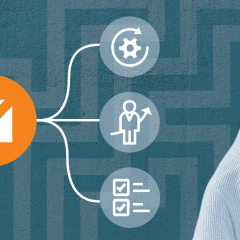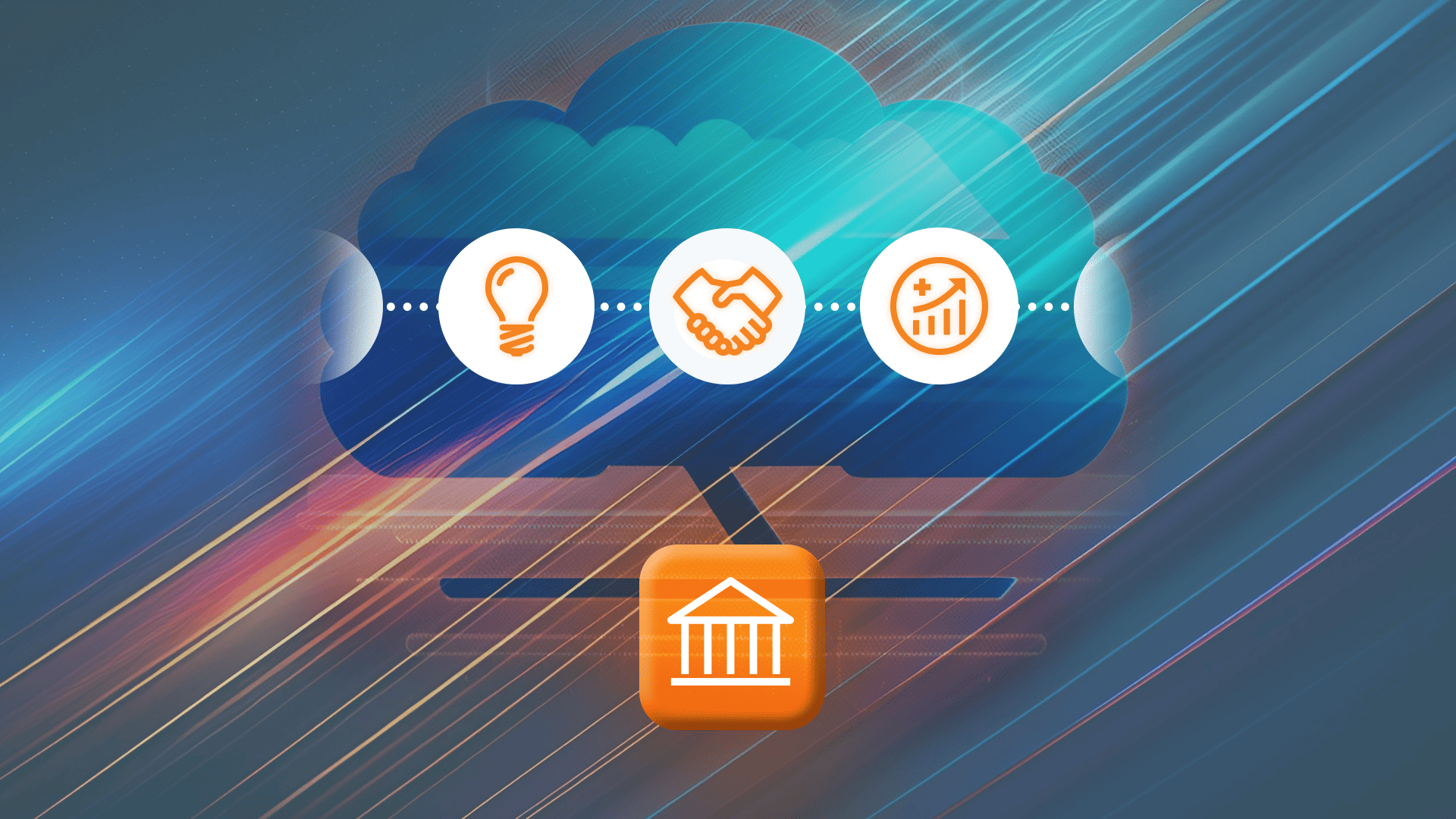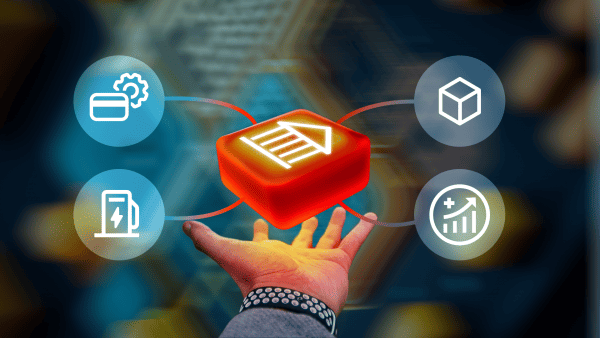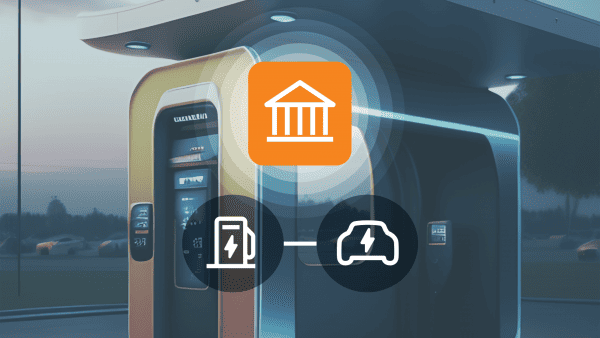Telecommunication is changing in the fast-growing African market, and in many other rural-heavy regions, too. Traditional wireline and fiber ISPs and CSPs are facing some pretty tough times. Virtual workplaces, the glut of fiber, ISP billing evolution, the (steep!) cost of infrastructure, and the (equally steep!) rise of mobile users – not to mention the wireless providers who serve them – are all making it harder to turn a profit.
Amid the swirl of all these challenges, a single question is keeping CSP and ISP companies large and small up at night. Will the dawn of the 5G era hurt or help? The answer, as most business strategy conundrums are, is complicated.
So, let’s untangle this problem together. Along the way, we’ll look at ISP billing and how ISPs are finding new strategies for profit as the once-valuable fiberoptic connection loses its shine. We’ll also zoom in on the rural African telecom industry: How did we get here? Where is it going? And what lessons does it hold for your business?
What Is 5G Service? And If It’s So Hot, Why Is 5G Hard to Monetize?
5G – the promised future. The “fifth generation” mobile network is the new standard for cellular network technology. (It follows, obviously, on 3G and 4G… and 1G and 2G, though we didn’t know we were going to call them that back then.)

From a consumer standpoint, 5G came into being in 2019. It is faster (up to 10 gbps), can handle more traffic, and is well suited to supporting IoT (Internet of Things) and M2M (machine-to-machine) applications. (And no, it will not cause a zombie apocalypse.)
It’s a hot market. Very hot: estimates say it will be a $960-billion market by 2030. But while there are a lot of new opportunities, there are also a lot of new challenges. The key to hitting the opportunity side and avoiding the challenge side of 5G is monetization. And that is proving more elusive than anyone realized.
Why is 5G hard to monetize? First, it involves a lot of capital expenditure. Second, while there is a growing demand for 5G-ready apps, there is not a lot of clear vision around what those apps will cost or how to harvest profit from them. But one thing is certain: MNOs, ISPs, and MVNOs are learning that offering nothing but a fibre-optic connection won’t cut it anymore. Those connections are an easily swapped and increasingly cheap commodity. If service providers want to survive, they have to put their focus on the “service.”
Why Growth Has Its Own Challenges
And monetization isn’t the only tricky part. Yes, 5G and high-speed wireless last-mile infrastructure may be bringing us into “the new bright future,” but fiber-optic submarine cables do not grow on trees. (Or even in kelp forests.)
Demand is only increasing as the rise of bandwidth-greedy applications continues apace. If you are a telecom provider and you thought the demand spikes during COVID times were challenging, brace yourselves. The number of bytes being sent back and forth across the globe is increasing all the time. Significantly. There are the new shiny Apple VR toys. There is the growth of IoT. (We’re only at the tip of the iceberg on that one.) There is the endless sea of TikTok users. And there may not be enough bandwidth from the upstream providers or regional peering partners to support it all.
What does all this mean for the future? Yes, the situation may slightly change when satellite operators like Starlink move part of the now-terrestrial traffic to their satellite internet constellation. Peering and transit agreements between ISPs will likely remain for a good long while. In developing regions, providers will be leaning into fair usage policies and quality of service as key product differentiators. And then there is one of the most crucial tools for CSPs and ISPs as they navigate these challenging waters…
ISP Billing and Revenue Management to the Rescue!
This is where CSP and ISP billing solutions and revenue management systems come into play. Modern billing solutions have long been undergoing significant changes, thanks to already-underway progress in both smartphone market penetration and the virtualization of the once-mighty office. To stay nimble in this era of rapid evolution, ISPs and telecoms have embraced ultra-flexible billing and charging solutions that can change with the products and services they are offering.
Now, with dynamic pricing models and real-time charging, telco and ISP billing software has become responsive enough and adaptive enough to allow data providers to offer a level of diversity in their services that was previously unimaginable. That means CSPs and ISPs no longer have to compete on price, racing to the bottom with their local competitors in a game that everyone loses. Instead, they can custom tailor packages, services, pricing models, and bundles that their target market will want, and that will make them stay.
And flexible, real-time ISP billing and charging doesn’t only allow providers to offer a wider range of services. It also provides transparency to the customer. They can watch their data usage in real-time – meaning no more surprises when the bill arrives. It also allows them to adjust to their own needs as well: rather than pay for a huge data package every month, they can save money by choosing a smaller package, and then top up when they foresee the need for, say, a Netflix binge. (Or they can choose a package that has unlimited entertainment streaming built right in. That way they never have to think about their data limits again.)
Control What You Can Control (and Stay Nimble for the Rest)
“But,” you might ask, “what good does it do to get the latest platform technology if the infrastructure is going to keep changing?”
In our 20+ years of experience, we’ve come to see that systems and standards are always going to keep changing. (Along with regulations, and end-user devices, and market expectations, and.. and… and…) That’s why we designed PortaBilling to be adaptable, to be easy to integrate, and to keep on supporting providers no matter what last-mile technology is being used.
Telcos around the world have been using PortaBilling for billing, online charging and revenue assurance since we were all using dial-up and ADSL. It worked great then, and it works great now. Fiber, wire, wireless. FTTB, FTTx, FTTH. WiFi hotspots, WiMAX, LTE, VoLTE – and, yes, 5G. For PortaBilling, it’s not an issue – it will keep on providing billing, online charging, and revenue assurance. And it won’t be an issue for non-3GPP, Tarana, or whatever far-future systems the aliens or terminators or ape overlords will put into place.
And that brings us back, in a roundabout way, to rural markets in Africa. Where, at present, change can be a constant.
The (Mostly) Untapped Market for Rural Revenue
Rural means different things for different people. In Canada, if you talked about rural areas, your audience would likely be thinking of that stretch just outside the big-city suburbs where you first start to see cows. But the reality of rural is a much wider range of communities: think of places that are a hundred kilometers away from the nearest neighboring settlement, with no cellphone kiosks or hotspots in sight.
This is where necessity becomes the mother of invention – and of opportunity. In emerging economies like those in some African regions (and in many other global regions, Canada included) communities are getting tired of waiting for large national MNOs to notice them. They’ve started creating their own ISPs, with the help of smaller providers.
You can’t really blame the big companies: it’s a tough call if you’re faced with the proposition of laying out hundreds of kilometers of fiber and setting up mobile towers (and taking on the resulting giant high-speed internet infrastructure bill) for a few thousand or even a few hundred subscribers. Thankfully, the Canadian government and local mining consortiums were there to help shoulder some of these costs.
A Real-World Example of Independent Rural Connectivity
Take the Canadian village of Kawawachikamach. A few years ago the Indigenous community of Naskapi worked together to create an ISP called Naskapi Imuun, Inc. Now, it has spun off Sichuun, Inc., which manages the fiber network.
One of the two key success ingredients that helped the residents of Kawawachikamach turn a rural ISP into a profitable business was partnering with PortaOne to provide the necessary switching and telecom billing software. The other ingredient was their decision to not provide internet service alone – which would have been an easy, if short-sighted, decision for a community that had been going without decent service for so long. Instead, they had the foresight to also include bundled services such as IPTV, VoIP, hosted PBX, and SIP trunking services for enterprises.
Because Naskapi Imuun chose to diversify, the community was able to access features beyond basic local connectivity. And, thanks to those enterprise services, the business community in Kawawachikamach can thrive as well. That’s a mutually beneficial setup for side-by-side growth: community, and ISP.
Rural ISP Billing on the Other Side of the Atlantic
Meanwhile, over the pond in Africa, the issue of rural internet access is an entirely different animal. But the principles remain the same. True, in many underresourced and remote regions, the idea of something like a Netflix binge might be so far outside of daily reality to be (for now) irrelevant. That typically means that the kind of corporate or government backing that helped Kawawachikamach get connected simply doesn’t exist. But that doesn’t mean it’s not going to happen.
It’s a case of “build it and they will come.” In this case, the “they” is the revenues. And we have a partner on our team who knows this firsthand.
How to “De-Remote” a Remote Area
At our 2023 PortaOne African Meetup in Johannesburg, WTL (Wireless Technology Labs) Belgium managing director Satya Mekala said that the business case for connecting small, remote communities lies in the economies that can spring up inside those digital oases. Yes, if you’re a business, you have to turn a profit, and it is not an attractive idea to invest heavily in creating a service if there is no one with the money to pay for it.
But if the connectivity you create can enable the launch of small businesses, employment, spending, and more small businesses to support those industries and workers, now suddenly you have a customer base. A very loyal customer base.
“Once you connect a remote village, it becomes the epicenter,” says Satya Mekala when explaining the WTL business case in rural Africa. WTL provides small-cell based 2G and 4G radios (mostly 4G these days), the core systems that interconnect with the operators (or, for independent operators, a standalone core), and a community center solution that supplies voice, a WiFi hotspot, and mobile money.
“The community center solution can be offered as a franchise by which local owners can make money while maintaining security for the tower,” Mekala explains. “This is a win-win situation in remote areas.”
“Build It and They Will Come” in Action, CSP & ISP Billing Style
In describing his company’s efforts to connect several small communities in Nigeria (watch the video above to get the whole story), Mekala admits it was slow going in the early days. Residents in many of the remote communities they helped hook up were used to the ways things were and at first didn’t see any value in having connectivity to the outside world.
But: the business model Mekala described earlier went exactly as planned. As a few enterprising individuals tapped into that connectivity to launch and grow small businesses, suddenly the ability to communicate instantly with surrounding villages to conduct trade started to make sense.
As these new businesses prospered, other potential entrepreneurs took note. Soon, more and more local folks were purchasing their own handsets. And more and more local folks started to get ideas of small enterprises that they could launch. In not much time, the emerging communications companies that WTL helped to enable were actually seeing a return on their investment.
The Rural Connectivity Nuts and Bolts
But, how? Especially when the cost of that infrastructure development was so steep? They did it through partnerships. The smaller, regional telecoms teamed up with larger telecom companies such as Vodafone and piggybacked off of their networks. It worked much the same way as with the MVNO model:
- A local infrastructure provider builds a tower in a remote area where there is no network under an MNO license.
- The provider equips the tower with power and radio (that’s that 3G/4G Mekala describes earlier).
- Then the provider takes the “backhaul” via satellite, microwave or fiber and delivers the network to the MNO.
- The MNO sells SIM cards and other services to make their money.
- Finally, the MNO shares the revenue they generate.
This is how WTL enabled small telcos to launch in remote regions where there were never any providers before. And to do it all without the upfront costs of spectrum purchases.
How CSP & ISP Billing Software Can Turn $3 per Month into a Viable Venture
Now, there was only one missing ingredient to connect these rural regions in a cost-effective manner. And that was a flexible switching and billing platform.

Remember, these are generally poorer regions. The expected average revenue for a given customer would be a mere $3 a month. To make that economically feasible, the entire billing process would have to be automated and virtual. The salary cost of hiring even a single telecom billing analyst would destroy the already razor-thin margins.
Fortunately, PortaOne had exactly the right types of billing software solutions for ISPs and CSPs. PortaBilling has the flexibility and customizability to match the unique challenges in remote regions like rural Africa. And as these markets continue to grow, the demand for additional services will grow too. Diversifying further into sectors like VoIP, IoT, M2M, and PBX will become a potentially profitable reality. And PortaBilling will be ready.
But Let’s Get Back to 5G Monetization and ISP Billing…
Before COVID, network operators were struggling with the value proposition of 5G. High capital expenditures related to rolling out 5G capable towers were the least of their problems.
Back then, CSPs and ISPs were questioning the hype. What is 5G service going to offer that we can’t already do? Who really needs that amount of bandwidth, anyway? And who is going to be willing to pay for it?
All of that changed with the pandemic. Suddenly, for an ISP or CSP, what was once primarily a download-heavy service became a download AND upload-heavy service. “Who really needs it?” went out the window. A gargantuan demand for speed and bandwidth became immediate and paramount.
A Skype video call in 2015 at a lower camera resolution was a simple affair. Within short weeks around March 2020, even a medium-sized enterprise suddenly needed the capability for an all-hands 20-person Zoom meeting. Things were getting weird. Each meeting participant was now pushing their own video feeds out to all 20 people and vice-versa simultaneously. “Who needs it?” indeed.
But the struggle for monetization was still very real. With the needs of both residential and enterprise consumers becoming more complex on the daily, ISPs and CSPs realized that providing base-level data service to existing subscribers via their in-house broadband billing systems wasn’t going to cut it. They needed to expand further.
These were the real growing years of cloud services for all those enterprises that suddenly needed massive amounts of storage and networking for their now 100-percent remote workforce. It was also the dawn of flexible and dynamic pricing models based on peak usage times.
What Are the Next 5G Challenges for CSPs & ISPs?
For a long time now there has been a lot of talk about the new age of AR and VR. Yet there hasn’t been a whole lot of real-world delivery… until now. The sector is finally starting to see some true sunlight with that long awaited release of Apple’s new VisionPro headset. Developers are lining up to produce native apps and content for it.
Even the underwhelming launch of the Metaverse hasn’t stopped Meta-Slash-Facebook-Slash-Instagram from continuing to invest billions into AR and VR. And for good reason. Couple AR/VR with the new large language models such as ChatGPT, and what do you have? You have the potential to revolutionize industries… societies… even how we as a species create and communicate.
Between these up-and-coming entities and the long-established behemoths, new revenue opportunities are appearing at a rapid pace. Even outside of the traditional telecommunications sphere. If they want to activate those opportunities before their competitors do, those companies are going to need to partner with network providers.
Want an example? Look at how Meta launched a free-data service in developing countries via partnerships with CSPs. (Okay, it didn’t turn out as Meta promised, but that’s their own fault.) That’s one good way to keep the customer on their platforms instead of someone else’s.
Moving forward, the future is even more data-heavy than we could have anticipated. And people (and enterprises) are willing to pay for it. All of this is going to require massive amounts of bandwidth. 5G, it appears, is ready to handle it. That leaves one remaining question for ISPs and CSPs everywhere, especially those who want to take on currently underserviced regions. Do you have the CSP or ISP billing system that can adapt to whatever the business and consumer world does next with that firehose of connectivity?
How ISP Billing Can Help You Maintain a Steady and Profitable Ship
It’s clear that the complexity and scale of a 5G future is a really big wave. If you want to ride the crest (and not get capsized), your telecom ship needs a billing and charging engine that can do the job. So any CSP or ISP businesses out there that are dwelling on the cost of adopting a next-generation telecom billing software should consider a reframe. The question is not: “What is the cost of billing software?” The real question is this: “What is the amount of missed revenue because of NOT adopting a robust and flexible billing solution?”

Our PortaSwitch and PortaBilling platforms are turning challenges into opportunities. They help simplify complex switching demands and billing cycles, and manage diverse networks of payments to a multitude of providers no matter where the data travels. Our flexible API and open architecture philosophy allow clients to design their own integrated and custom systems. (Or to work with us to make it happen as a team.) We can also help small businesses create IoT ecosystems that nurture small innovators and turn them into growing, long-term enterprise customers.
Powering 5G monetization – in Africa or anywhere – isn’t just about collecting revenue and paying vendors. Accuracy and transparency are key to the advanced data analytics that keep everything running smoothly and profitably.
Want to learn more about how PortaOne can help you navigate the vast open future of CSP & ISP billing, 5G monetization, traffic management solutions, and more? Get in touch with us. We can help you turn your concerns into ideas, and your ideas into a plan.
ISP Billing FAQs
5G monetization is leveraging “fifth generation” mobile network infrastructure to build apps and services that individuals, businesses, and communities will pay for. Monetizing 5G services requires a billing and charging system that can adapt to changing technologies and market trends while preventing revenue leakage.
5G, or the “fifth generation” wireless data network, is the new standard for cellular network technology, but it also involves a lot of capital expenditure. As 5G infrastructure expands, many telecoms and ISPs are asking how to monetize it – particularly in rural and remote areas. The key steps in making 5G profitable for ISP and telecom companies include strategic partnerships to help spread out the infrastructure costs, and to think beyond offering a simple fiberoptic connection service. Embrace the MVNO model and put the emphasis on “service” instead of “connection” by offering individual communities targeted applications and supports that can help them develop their economies and do business more efficiently. A flexible and customizable telecom & ISP billing platform can help you charge and bill for new, innovative, and tailored services.
5G came into being in 2019. It follows (obviously) on 3G and 4G mobile network technology. (1G and 2G were not called that when they were the standards, as we didn’t yet know those numbers would keep going up.) The main difference between 4G and 5G is higher speed and less lag. 5G can theoretically deliver speeds of up to 10 gigabits per second, compared to 4G, which delivered in the megabit range. 5G also operates on a new type of spectrum (mmWave), and so requires a different type of infrastructure, called small cell base stations.
5G is a type of cellular network. It will, however, support home internet service as well as mobile services. In fact, 5G is a unified service that is expected to be able to connect, well, everything: from people talking to people, to machines talking to machines (e.g., IoT and M2M).
ISP billing software supports the charging, and billing of ISP (Internet Service Provider) services. It helps service providers accurately track usage, send invoices, collect payments (often via integration with payment software), prevent fraud and revenue leakage, and design tailored bundles and product packages. On the customer side, good ISP billing systems help users manage their accounts, monitor their payments, top up their accounts, and pause, start, and change their service as needed. The best ISP billing solutions embrace automation and can adapt to many different service delivery business models, including pre-paid, on-demand, monthly billing, vouchers and scratch cards, bundled services, and more. They can also adapt to innovative new services, such as IoT (Internet of Things), M2M (machine to machine), EV billing, and whatever comes next. But the question of “what is an ISP billing system” can also be hard to answer simply, because in today’s industry, smart companies are using integration to connect their customer management systems (CRM), enterprise resource planning systems (ERP), and more for automated, connected, and scalable systems that are unique to each company and its needs.
The answer to this question is more or less the same as the answer to the question above on what is ISP billing software. Good billing platforms are adaptable, and can be customized to fit the needs of telcos, as well as ISPs and IoT providers (and more!). It can also adapt to handle the tracking, charging, and invoicing of growing services like A2P and P2P SMS communications, and a pretty much limitless range of MVNO (mobile virtual network operator) business models. Modern telecom billing software like PortaBilling that uses real-time tracking is helping telcos prevent revenue leakage, and helping consumers avoid the dreaded bill shock.
In the old days, telecom and ISP billing processes were opaque and controlled by monolithic monopolies (a.k.a. the mastodon era), but today, both service providers and consumers are benefitting from adaptable, customizable platforms that enable small- and mid-sized and large telecoms to change with their market needs and create tailored services for specific customer niches. Thanks to the advent of low- and no-code API technology, billing and charging software can be integrated into all kinds of software systems, including CRMs, ERPs, payment processing software, online sales funnels, accounting systems, and more.
We can’t speak for all telecom and ISP billing platform providers, but at PortaOne we have an unlimited license and flexible pricing models that allow you to set your price based on clear and simple metrics. You can find out all about our pricing model here.
This is the PortaOne blog, so the simple and obvious answer to that question, from our perspective, would be PortaBilling from PortaOne. But we are also well aware that every ISP, CSP, and MVNO has unique needs and will want to find the system that works best for them. To that end, we have done the work of comparing the top alternatives to PortaBilling both in SaaS service delivery and as an in-house technology. These blog stories lay out our competitive edge and where the other technologies may have their own benefits, while also (as is the habit of our blogging team!) taking some pretty interesting side routes into the history of telecom innovation. If you want to learn more about PortaBilling and how it could be adapted to suit your business needs, get in touch with our support team.












